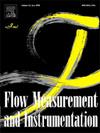Predictive flow rate measurement using self-mixing optical feedback interferometry for point-of-use microfluidic applications
IF 2.7
3区 工程技术
Q2 ENGINEERING, MECHANICAL
引用次数: 0
Abstract
A precise knowledge of the flow rate in microscale fluidic devices is one of the key challenges in modern diagnostics. Flow rate has a direct impact on diffusion rates during chemical processing, which in turn minimizes the quantity of minute samples needed for testing. The flow rate measurement methods reported to date either require a relatively bulky optical arrangement, or maintaining their form factor at a low cost is not feasible. To address this issue, Self-Mixing Optical Feedback Interferometry (SM-OFI) is being widely explored for the design of microfluidic flowmetry devices, owing to its portability and cost-effective structure. However, measuring the variable flow rate is still a limitation for SM-OFI systems. In this paper, the authors present a predictive analysis-based measurement method to estimate the flow rate. The proposed method is based on an auto-regressive least mean square algorithm, and the variations in the flow rates are solved as a Quadratic Performance Surface (QPS) problem. The proposed method was experimentally verified using different test samples prepared with distilled water, benzyl chloride, and methylene iodide. The statistical analysis performed on the experimental results revealed a strong linear correlation with the true values, with an R-squared value of 0.9997 and a standard error of 0.0013. The proposed method achieves a resolution of 1.1828 μL/min with a standard uncertainty of 0.1860 μL/min. It also features a well-aligned, real-time measurement scheme integrated into a compact optical structure.
预测流量测量使用自混合光学反馈干涉测量的使用点微流体的应用
精确了解微尺度流体装置的流量是现代诊断的关键挑战之一。在化学处理过程中,流速对扩散速率有直接影响,这反过来又使测试所需的微量样品的数量最小化。迄今为止报道的流量测量方法要么需要相对笨重的光学装置,要么以低成本保持其形状因素是不可实现的。为了解决这一问题,自混合光反馈干涉法(SM-OFI)因其便携性和高性价比的结构而被广泛用于微流控流量测量装置的设计。然而,测量可变流量仍然是SM-OFI系统的一个限制。本文提出了一种基于预测分析的流量估算方法。该方法基于自回归最小均方算法,将流量变化作为二次性能面(QPS)问题求解。用蒸馏水、氯化苄和碘化亚甲基制备了不同的测试样品,对该方法进行了实验验证。对实验结果进行统计分析,结果与真值具有较强的线性相关性,r平方值为0.9997,标准误差为0.0013。该方法的分辨率为1.1828 μL/min,标准不确定度为0.1860 μL/min。它还具有一个良好的对准,实时测量方案集成到一个紧凑的光学结构。
本文章由计算机程序翻译,如有差异,请以英文原文为准。
求助全文
约1分钟内获得全文
求助全文
来源期刊

Flow Measurement and Instrumentation
工程技术-工程:机械
CiteScore
4.30
自引率
13.60%
发文量
123
审稿时长
6 months
期刊介绍:
Flow Measurement and Instrumentation is dedicated to disseminating the latest research results on all aspects of flow measurement, in both closed conduits and open channels. The design of flow measurement systems involves a wide variety of multidisciplinary activities including modelling the flow sensor, the fluid flow and the sensor/fluid interactions through the use of computation techniques; the development of advanced transducer systems and their associated signal processing and the laboratory and field assessment of the overall system under ideal and disturbed conditions.
FMI is the essential forum for critical information exchange, and contributions are particularly encouraged in the following areas of interest:
Modelling: the application of mathematical and computational modelling to the interaction of fluid dynamics with flowmeters, including flowmeter behaviour, improved flowmeter design and installation problems. Application of CAD/CAE techniques to flowmeter modelling are eligible.
Design and development: the detailed design of the flowmeter head and/or signal processing aspects of novel flowmeters. Emphasis is given to papers identifying new sensor configurations, multisensor flow measurement systems, non-intrusive flow metering techniques and the application of microelectronic techniques in smart or intelligent systems.
Calibration techniques: including descriptions of new or existing calibration facilities and techniques, calibration data from different flowmeter types, and calibration intercomparison data from different laboratories.
Installation effect data: dealing with the effects of non-ideal flow conditions on flowmeters. Papers combining a theoretical understanding of flowmeter behaviour with experimental work are particularly welcome.
 求助内容:
求助内容: 应助结果提醒方式:
应助结果提醒方式:


